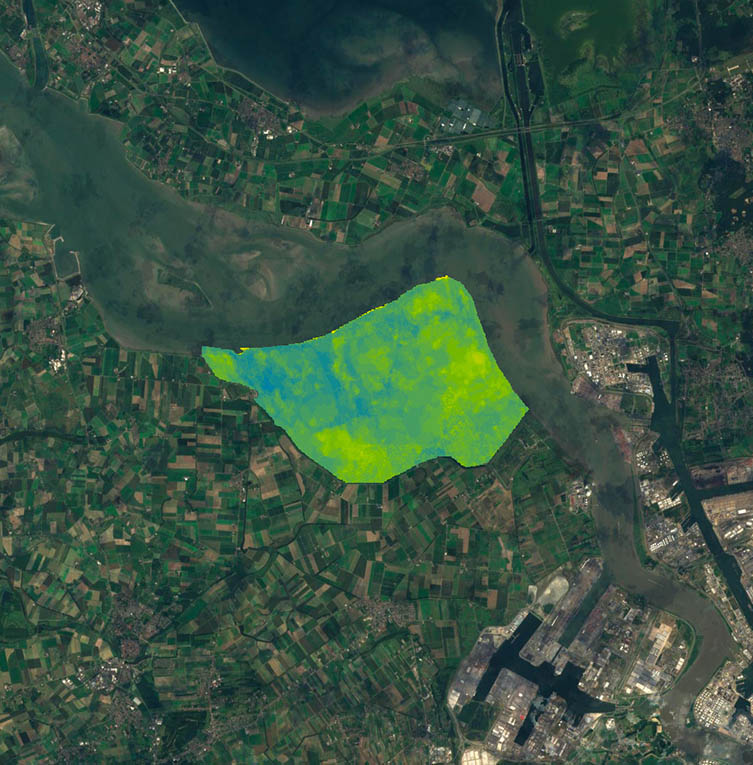EO4Wetlands, depoldering monitored by satellite
A protective barrier that is all the more important in the current context of rising sea levels, wetlands play a major role in countering disasters such as floods and tides. Faced with recurring sea storms, some northern European coasts are restoring their polders by creating gaps that will allow the sea to take its place once again. This is followed by a sedimentation process that encourages the relatively rapid rebirth of mudflats and salt meadows, which then provide a buffer space to slow down the swell. This is the process implemented by the Living Lab Hedwige-Prosperpolder (LLHPP), on the border between Belgium and the Netherlands, and closely monitored by the EO4Wetlands project to monitor these changes.
Preparation in the field
"We walked for three hours in the mud!" laughs Cyrille Fauchard, project manager for Cerema, as he recalls his first visit to the Hedwige-Prosperpolder last July. "Above all, we saw how, following the demolition of the dykes in 2022, the tides that flow in and out of the polder will give way to marsh-like vegetation. Most of it has already been revegetated - it's really impressive! On site, Stijn Temmerman, a geographer specializing in coastal landscapes and rivers at the University of Antwerp, acted as our guide. Running a research programme alongside other scientists, including biologists and sedimentologists, his team monitors the polder in situ and is very interested in our satellite monitoring approach, particularly for monitoring temperatures and water content. They have given us access to parts of the polder that are off-limits to the public, with permission to install a probe to correlate its data with that from the satellites".

▲ Field visit to LLHPP on 17 July 2023. View of the polder being revegetated with, in the background, the port of Antwerp. © Cerema
Preparing the application
At the same time, Cerema has recruited a post-doctoral student who, from February 2024, will be working on the vegetation component based on satellite images. He will be accompanied by Teodolina Lopez, a research engineer at Cerema: "The aim is to develop a processing chain to classify vegetation in order to study changes over time, particularly before and after a dyke breach. The main building block will be based on visible observations, then we will test the added value - or otherwise!”
In the meantime, Teodolina Lopez will be processing a whole range of images of the polder that Geomatys will use for its initial tests: day and night thermal ASTER images, Sentinel-1 radar images, Pleiades images (visible range), not forgetting LIDAR images.

▲ Extracts from various surface temperature maps estimated by a) Landsat 8 and b) and c) MODIS Terra. © Images : NASA / LST : Cerema
So, we have a great project on the go, and we'll be keeping a close eye on it!





